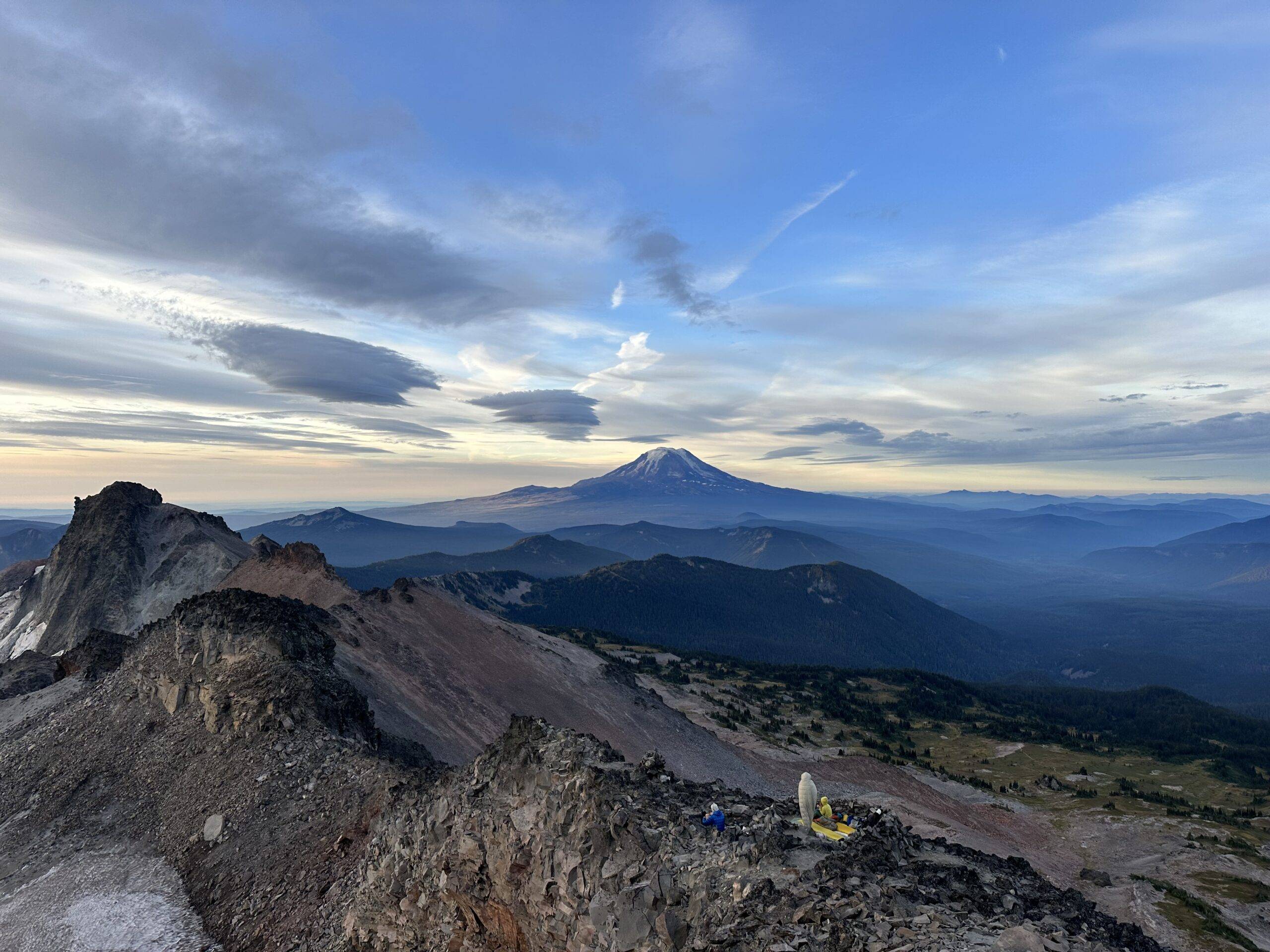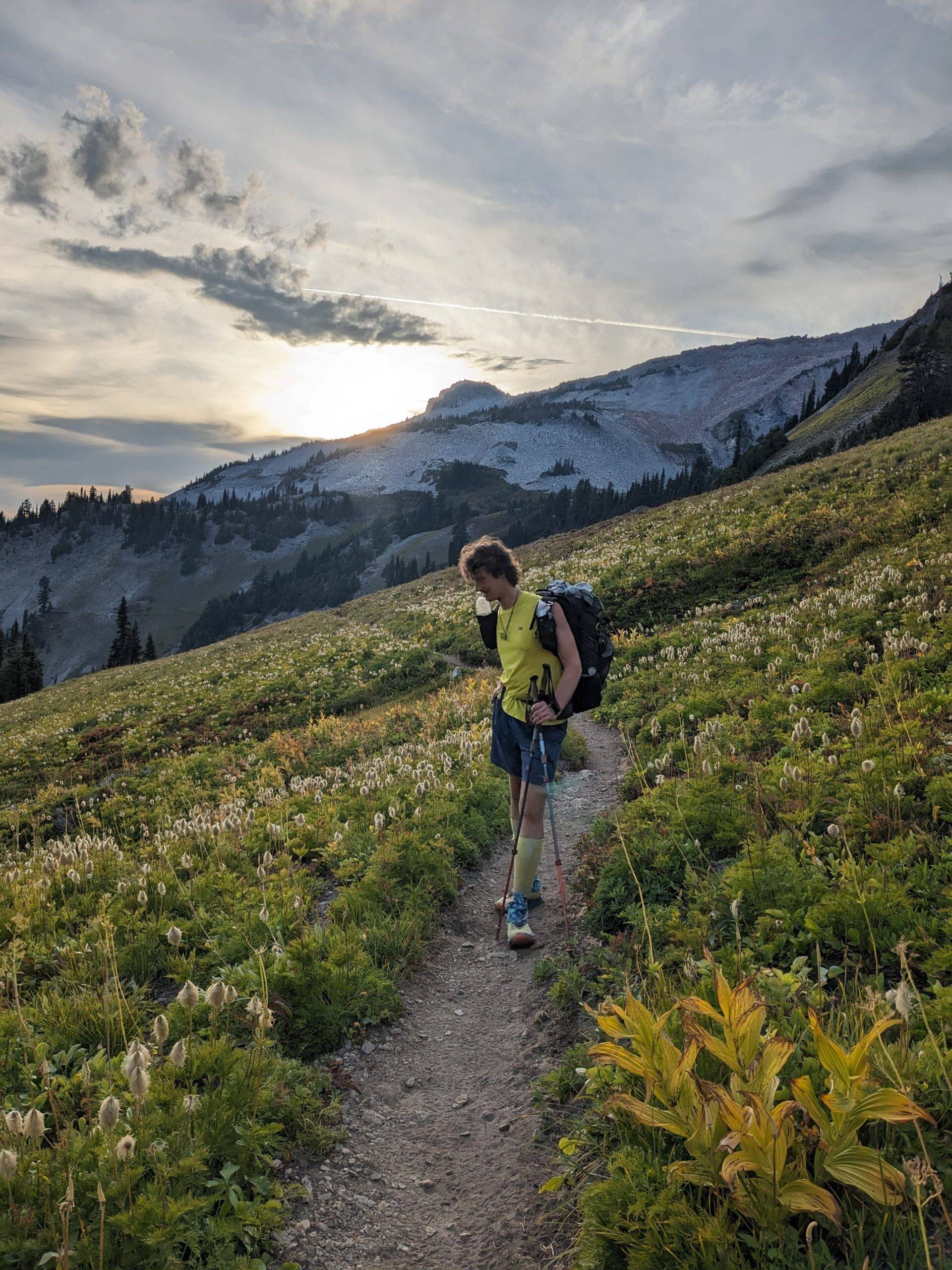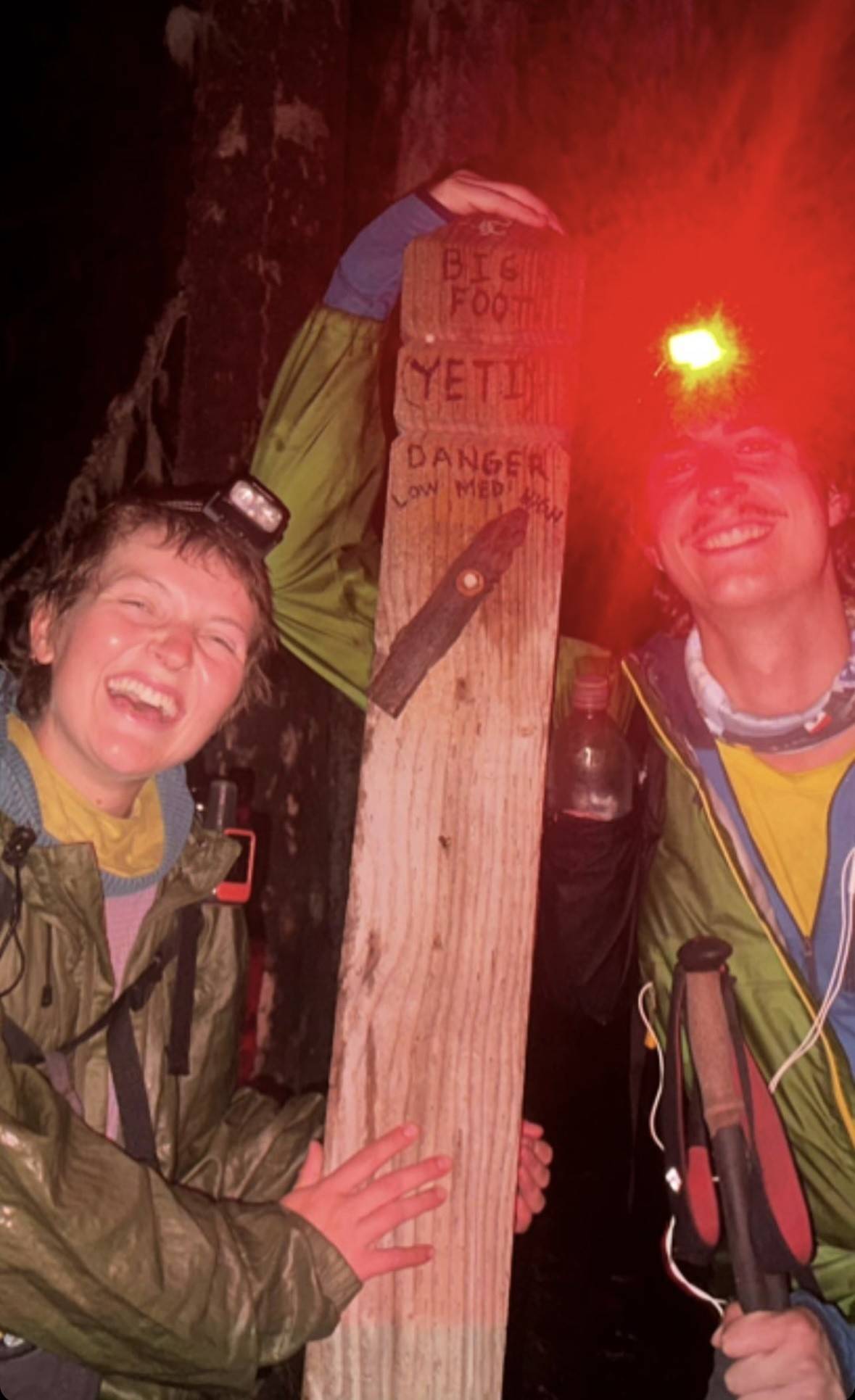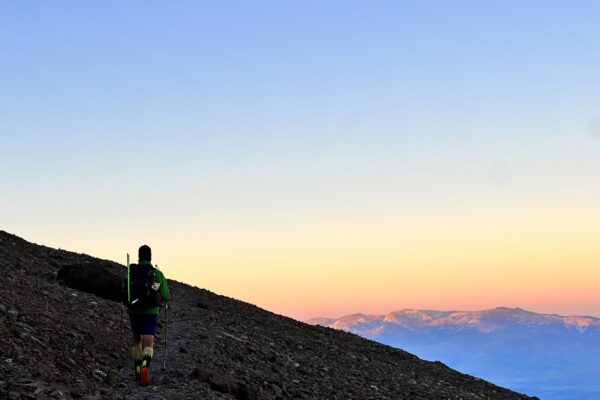“Time to just think things through”
Part 1
Hi Simon, nice that you agreed to share your story. We are really looking forward to hearing it. Maybe you can tell us a little about yourself first.
Hi, so I’m 22 years old. I originally come from the Heidelberg area, but now live in Regensburg and aI m studying human medicine there. My hobbies are primarily in outdoor sports. I like hiking and climbing, but I also like dancing, for example.
Oh dancing. We wouldn’t have expected that. What exactly?
Mainly Latin American couple dance. Samba, Cha-Cha, Jive and Rumba.
And how did you get into climbing?
I started climbing in the 6th grade in a local club. Later, towards the end of school, I often went bouldering with my sister. I had some longer breaks in between, but now in Regensburg I do that now and then. And soon I will be taking a top rope and lead climbing course at my university.
Do you go out on the rocks every now and then?
I don’t think I’m experienced enough to go outside on the rocks. But yes, in the future I would like to climb outside in nature.
What is it like with the queerness in the climbing halls in Regensburg?
My impression is that it is definitely queer-friendly there. But so far, at least I haven’t noticed that the queer community is particularly present here compared to other areas.
What does it mean for you to be out in nature, climbing or hiking?
I associate it with a great feeling of freedom. And I generally like to travel in a minimalist way. That’s why long-distance hiking appealed to me the most. You have this good feeling of escaping everyday life. In general, we are exposed to a lot of stressful things these days, and nature really gives me the opportunity to switch off and let my thoughts run free. This gives me time to just think things through.
What larger outdoor projects have you completed so far?
So almost all of my projects before the Pacific Crest Trail (PCT) were also long-distance hikes. Immediately after graduating from high school, I went hiking with a very good friend for about seven weeks. We were in the Black Forest on the Westweg [note from the editor: it is the first long-distance hiking trail in the Black Forest in Germany: 288 km] and on part of the E5 in Italy [note from the editor: hong-distance hiking trail from Oberstdorf to Meran]. Later I was in Scotland with the same friend on the “Skye Trail” on the Isle of Skye. Then I also went alone, on a long-distance hiking trail in Denmark, on the island of Møn. And I’ve also been to the Pyrenees for a week of long-distance hiking, doing a part of the “Pyrenees High Route”.
Which of your hiking adventures would you describe as the most beautiful?
I think, aside from the PCT, the one I remember most was my first long-distance hike in the Black Forest and the Alps. When you just set off for the very first time and know that you will be away from everyday life for several weeks, alone and on your own, with everything you need in your backpack. Yes, that is somehow special and left a long-lasting impression. I think that’s probably how many people feel about their first big hike. Also I was traveling with a friend on this tour, we really laughed a lot and had fun together. The nature in the Black Forest wasn’t the most spectacular compared to my other hikes, but that was secondary to having an unforgettable time.
You said you are minimalist, can you explain that in more detail?
By “minimalist” I mean that I only really carry the basics for hiking and survival in my backpack. For example tent, sleeping bag, sleeping mat, food and drinks. I also have my cell phone with me so that I can listen to a podcast or music every now and then and take photos. I generally hike according to the “ultralight” principle. This is particularly common on long trails in America. This means keeping all your equipment as light as possible. The focus of the preparations is then primarily on the weight. Some people even saw off the handle of the toothbrush to save weight. However, I haven’t taken it that far yet.
Are you a minimalist also in terms of people and prefer to hike alone?
For me, minimalism actually only refers to the equipment. Otherwise, I prefer to hike together in a group. I have found that with a bigger group or even with just two people, all the beautiful experiences become even more stunning and the low points during the trip only feel half as difficult. But traveling alone every now and then can of course also be a special experience.
You mentioned at some point that you would like to get more involved in queer activism. Tell me more about that.
The idea of turning this wish into reality first came to me when I was on the PCT. It is very important to me that the visibility and acceptance of the LGBTQ+ community improves. The multitude of smaller groups within the queer community also need more visibility, for example people who identify as asexual or non-binary. In the USA in particular, I noticed that there is still a lack of acceptance and education. Especially in the small towns and villages along the PCT, I noticed that things are quite conservative and unfortunately the people’s attitude there seems less queer-friendly. Although I didn’t have any bad experiences during my time there, I talked a lot about it with a friend who is originally from Texas. Growing up as a queer person in regions far away from the big, well-known cities can prove to be particularly difficult.
So let’s get back to your big adventure on the Pacific Crest Trail. Tell me briefly what exactly PCT is.
The PCT is one of the most famous long-distance hiking trails in the USA. It runs along mountain ranges in the western United States, through the states of California, Oregon and Washington. I started from the Mexican border. From there I hiked all the way to Canada. The majority of hikers travel in this direction, i.e. from south to north. However, there are also hikers who start at the Canadian border and hike south. The trail is around 4,280 kilometers long in total and I was on the trail for a total of 5 ½ months.
What is this trail so famous?
In general, long-distance hiking is very popular in the USA. There are also several other well-known long-distance hiking trails in the USA, such as the Continental Divide Trail (CDT) or Appalachian Trail (AT). I think the PCT particularly stands out because of its varied nature. It is also well suited for people who have not had much hiking experience before. In the USA there has been a large hiking community along these trails for a long time, which is really very special.
How did you come across this particular trail?
I first heard about the trail from my cousin. She hiked the PCT in 2016. That really inspired me back then and I would actually like to try one of the three big trails in the USA straight after graduating from my high school. Then unfortunately COVID intervened, but luckily it worked out later.
What are your memories of the first days on the trail?
The first few days were really exciting for me. Well, I still remember how we arrived at the Mexican border at the southern terminus in the shuttle at the very beginning. We first signed the logbook, took a few photos and then set off straight away. The first 700 miles of the trail are desert. So it was very hot. On the first day I really didn’t feel fit at all. That was a first jump into reality. On the second and third days I had very sore muscles, partly because my backpack was initially too heavy. But over the next few days I became much more confident. You learn a lot relatively quickly and it became easier for me to hike more kilometers day by day. I remember the first few weeks in particular as a particularly socially engaging time. So many people started at the same time in mid-April. There were lots of conversations, camping together and so on. I have a lot of nice memories from that period.
Were there less hikers on the rest of the tral?
Yes definitely. After the desert section, there were less people around. 2023 was also a special year. There was an awful lot of snow on the trail. More than ever before since weather records began. The advantage of 2023 was that it was already hot in the desert when we hiked through, but definitely not as hot as other years. After the desert you reach the Sierra Nevada, where you travel 300 miles mainly in the high mountains. In years with average snow conditions, from the beginning to mid-June there are usually only a few sections of the trail with snow fields. But when we arrived at the start of the Sierra Nevada, everything was still covered in meters of snow. Other hikers and I then joined together as a solid group. We then planned and stayed together, also to be more safe.
There were also many hikers who “flipped” further north. That means they skipped the Sierra Nevada in order to come back later in the summer and hike the part they missed. For this reason there was a lot less going on for us on this part of the route. We were traveling as a group for several weeks and hardly met anyone else during that time. After about 6 weeks in the Sierra Nevada, we split up as a group. I then spent 2-3 weeks in northern California traveling alone most of the time. I hardly spoke to anyone else for days. That was also an intense time, but it was even nicer to go hiking with my friends again later.
Was there ever a moment when you were afraid or worried?
There were definitely some moments where I was scared or worried. When crossing larger rivers or often when hiking at night, you suddenly see the eyes of a deer in the dark. At some point we in the group started scaring each other in the dark, but it was always fun.
There was a moment on a steep pass in the Sierra Nevada where I was afraid that I was going to fall or slide down the slope. I remember that very vividly. The upper layer of snow had already melted slightly from the first rays of sunshine in the morning and was therefore quite slippery. I was then no longer able to secure myself with my crampons. Luckily one of my friends was there and was able to help me. Some were afraid of the animals, like rattlesnakes or bears. But I think the animals are somehow predictable and don’t mean any harm to you, so I wasn’t usually afraid of that. I only had a problem once or twice with mice, which came to us for shelter and food when it got colder and rainier in Washington, but to be honest I just never liked mice.
I think traveling in a city is generally more dangerous than on the trail. So when I was afraid, it was most likely of nature and its elements themselves: of storms, rivers or steep snow slopes.
Have you ever got to the point where you would have preferred to get out?
During my time on the trail, I often had the thought of what it would be like to simply stop. But I never seriously considered quitting. It was more likely to come to mind in bad moments or when you had a bad day. At times I felt like I wanted to be more in my comfort zone, but I knew I still really wanted to keep hiking.
What part was the most stressful part for you?
That was definitely the part through the Sierra Nevada. We knew this section would be a big challenge. That’s why we stocked up on the necessary snow equipment at the beginning. So ice axes, crampons, warmer layers of clothing and so on. We tried to prepare as best we could. Because our progress was much slower because of all the snow, we packed a lot of food. For the first section, for example, we had food for around 11 days. My backpack was really quite heavy, it weighed around 25 kilograms. It was no longer really “ultralight” and was quite intense, especially on the passes, some of which were over 4,000 meters high. What’s more, we all had little experience of how to use an ice ax, for example. We then taught ourselves most of it using videos and articles on the internet.
Waking up early was particularly tiring for me. We usually got up at 1 a.m. because the snow was still frozen at that time. We set off at two o’clock. Navigating, especially at night, was also a challenge. It was dark, everything was snowy and we usually had a lot of river crossings. Sometimes we walked up and down the river for hours to find a place where we could cross reasonably safely. And then going into the ice-cold water early in the morning, when the temperatures were below zero, to get across was really very uncomfortable.
We also had to look for our own route through bushes and over rocks because the actual trail was impassable or too dangerous due to destroyed bridges, avalanches, or generally due to the large amounts of snow. We have always supported each other as a group. There were however definitely times when hiking together caused difficulties. Everyone had different ideas about how we should approach something as a group and we all had to get used to making compromises and to act for the whole team. Ultimately, we were a really good team and I couldn’t have done it without my group. Strong friendships developed during this time. We got to know each other in the happiest but also hardest moments, which really bonded us. That was quite an adventure. As challenging as this stage was, it was definitely one of the most beautiful for me.

























